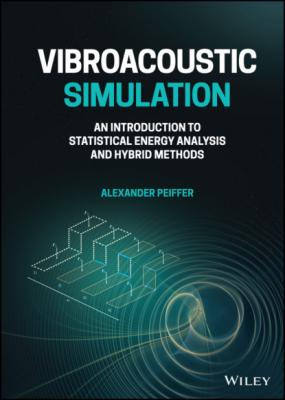Vibroacoustic Simulation. Alexander Peiffer
Чтение книги онлайн.
Читать онлайн книгу Vibroacoustic Simulation - Alexander Peiffer страница 39
 acoustic field of a spherical source the reactive field represents the near-field fluid volume that is carried by the sphere motion but not emitting a wave.
acoustic field of a spherical source the reactive field represents the near-field fluid volume that is carried by the sphere motion but not emitting a wave.
Figure 2.6 Reactance and resistance of specific acoustic impedance of a pulsating sphere. Source: Alexander Peiffer.
There are two limit cases in Equation (2.76):
1 kr≪1; the wave length λ is much larger than distance r.
2 kr≫1; the wave length λ is much smaller than distance r.
Introducing the above approximations into Equation (2.76) gives a fully reactive impedance for (i)
and a resistive part equal to plane waves for (ii)
2.4.1.2 Field Intensity, Power and Source Strength
The time averaged radiated intensity is
The total radiated power can now be evaluated from Equation (2.54) and the integration surface 4πr2
The mean square pressure can be derived from (2.74) and expressed by the intensity using (2.45)
Replacing the intensity in (2.81) gives the rms pressure in the spherical sound field due to power
2.4.1.3 Power and Radiation Impedance at the Surface Sphere
The characteristic impedance of the sphere exactly at the surface at radius R can be translated into the radiation impedance of the sphere as a volume source. The radiation impedance is defined as the ratio of pressure to source strength at the vibrating surface
If we assume a constant harmonic surface velocity vR we get for the radiation impedance of the breathing sphere and according to the acoustic impedance (2.76)
The acoustic radiation impedance is the ratio pressure and normal velocity at the sphere’s surface
We can now use this impedance to eliminate either p or vr. The power transmitted by a vibrating sphere using Equation (2.54) over the surface of the sphere
or for constant source pressure